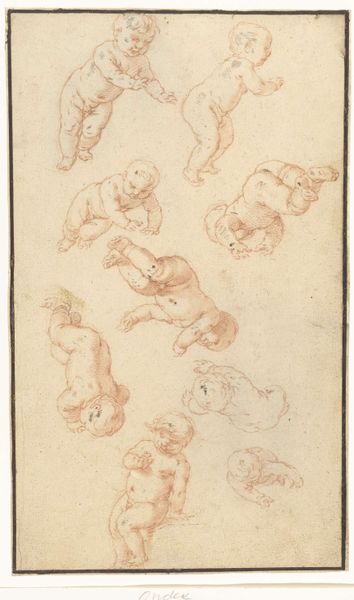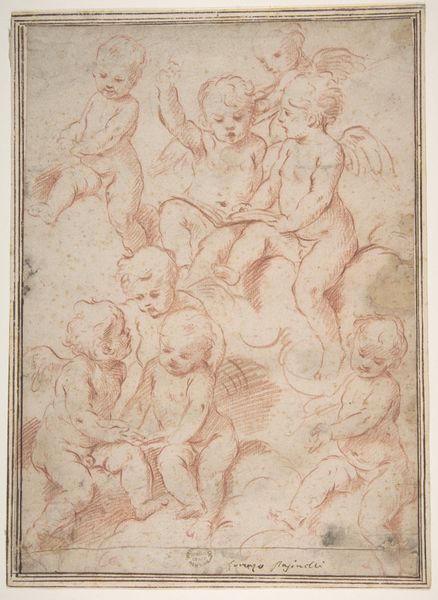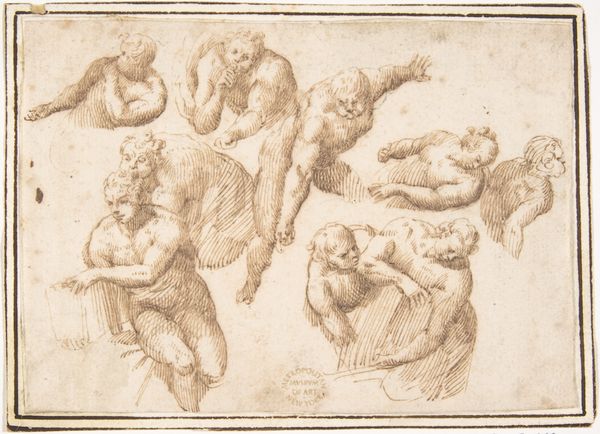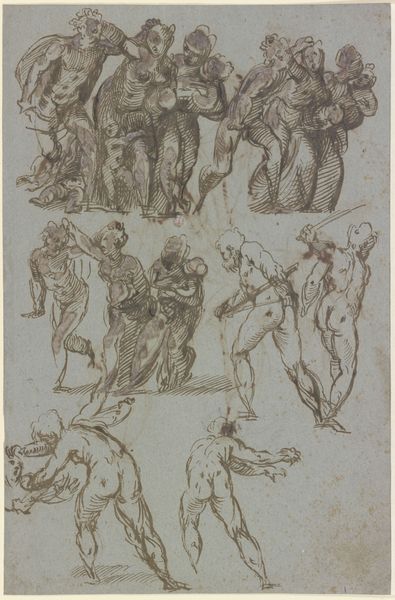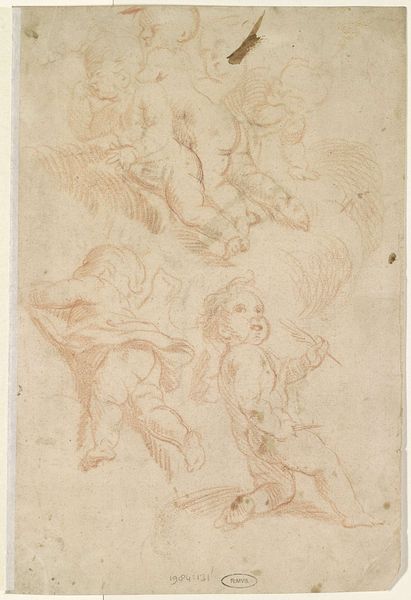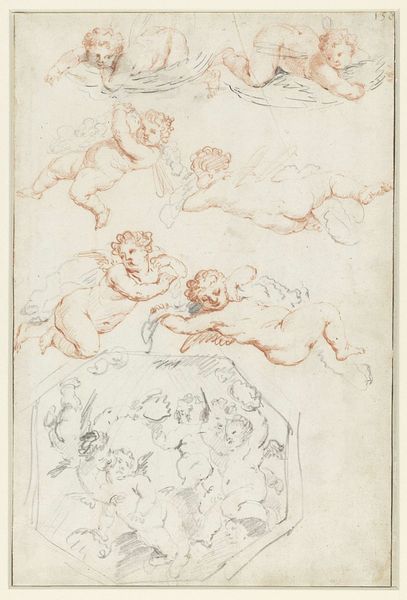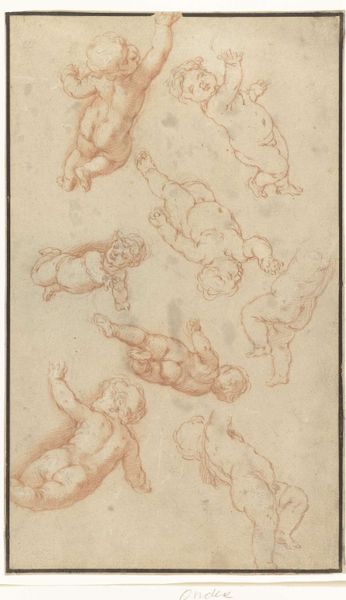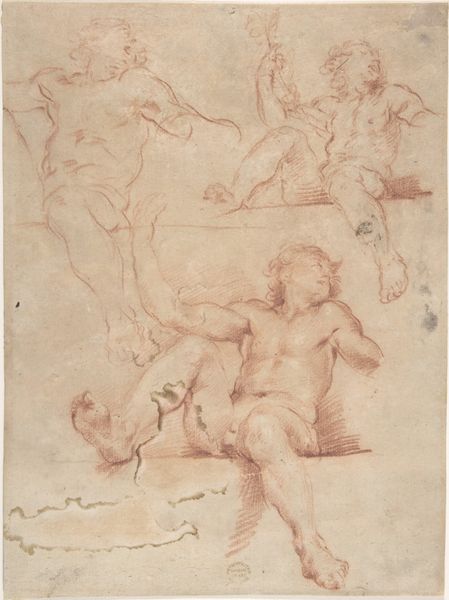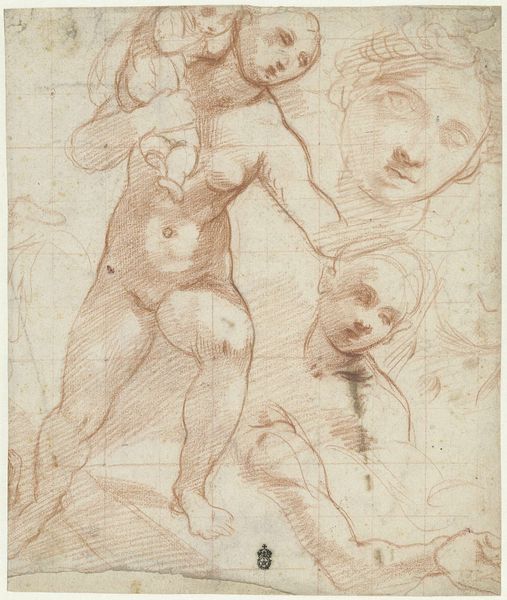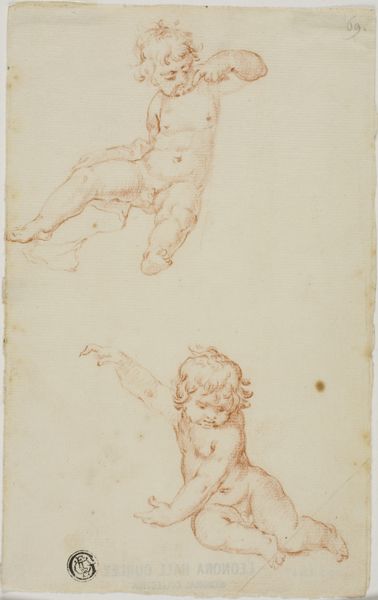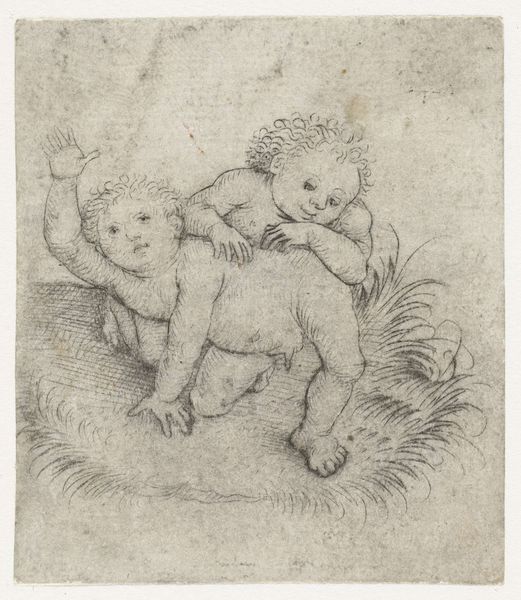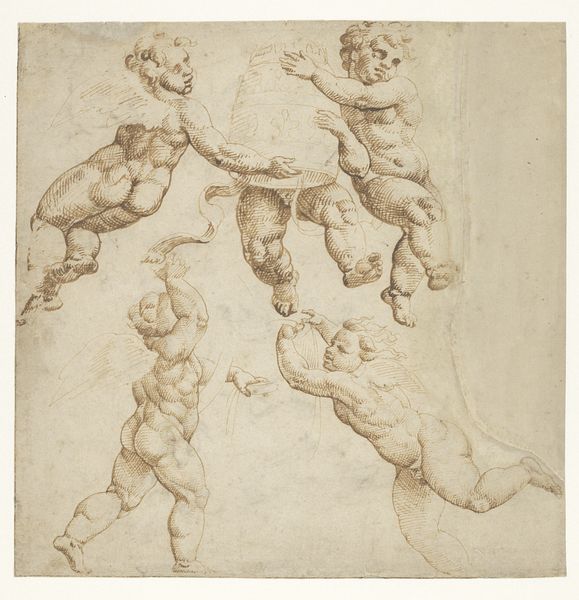
drawing, paper, ink
#
portrait
#
drawing
#
pencil sketch
#
mannerism
#
figuration
#
paper
#
ink
#
nude
Dimensions: height 281 mm, width 194 mm
Copyright: Rijks Museum: Open Domain
This red chalk drawing of floating putti was rendered by Abraham Bloemaert, likely in the early 17th century. These figures, often mistaken for mere cherubs, carry a rich symbolic weight, traceable through the annals of art history. The putto, derived from the classical figure of Eros or Cupid, embodies divine love. Notice how Bloemaert has captured them in various states of play and repose; these aren't simply decorative elements. They carry a deeper connection to primal human emotions. In earlier Renaissance art, putti danced at the edges of sacred scenes, pagan spirits joyously celebrating alongside Christian icons, their innocent faces a window into a world where divinity and humanity intertwine. Yet, observe how the putto continues to evolve, appearing later in Baroque art as symbols of worldly pleasures, losing some of its initial sacred meaning. These seemingly innocent figures touch something primal, a collective memory of purity and unbridled joy. The symbol has a cyclical progression, constantly resurfacing and evolving, a testament to the enduring power of cultural memory.
Comments
No comments
Be the first to comment and join the conversation on the ultimate creative platform.
